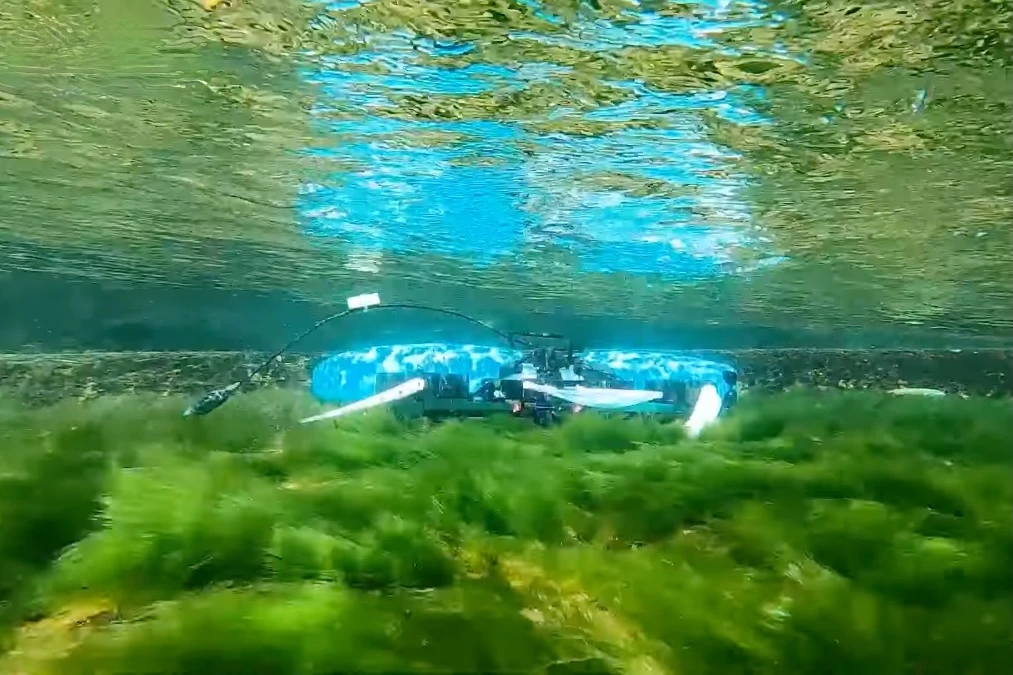A new underwater robot can swim through the water with fins, and walk or crawl along the bottom when necessary. These capabilities could really give it a leg up – pun fully intended – at outperforming its traditional thruster-powered counterparts.
When it comes to tasks such as exploring sunken ships and inspecting submerged structures, underwater ROVs (remotely operated vehicles) are frequently used.
Just like crewed submersibles, these vehicles utilize electric thrusters to move through the water. Unfortunately, though, those thrusters can get jammed up with seaweed, dangling cables, discarded fishing line or other material. Additionally, ROVs can't make any headway against currents flowing faster than the thrusters' top forward speed.
That's where HERO-BLUE is intended to come in.
Its name an acronym for "Hazardous and Extreme environment RObot for Biomimetic multiLocomotion-based Underwater Expedition," the experimental device was created by Taesik Kim and colleagues at South Korea's Pohang University of Science and Technology. It's definitely reminiscent of McGill and Dalhousie universities' AQUA robot, which uses six flippers to swim and sort of "flap" its way across dry land.

HERO-BLUE's body features four multimodal fins (two at the front, two at the back) along with two lateral fins (one on either side, in the middle of the body).
Each of the multimodal fins is made up of several polymer panels that are linked together by elastomer "tendons." They're constructed in such a way that the fin will remain rigid when force is applied in one direction, but become flexible when force is applied in the other direction.
The lateral fins each consist of an elastomer membrane suspended between two rigid "rays" (basically rods) – one at either end of the membrane.
When BLUE is swimming, the multimodal fins flap up and down, just like the pectoral fins of a fish. The lateral fins can also kick in as needed for finer maneuvers, moving in an undulating fashion like the underside fin of a knife fish.
That said, swimming may not be an option in strong currents. In such cases, BLUE utilizes its integrated buoyancy controllers to drop to the bottom, then uses its multimodal fins to walk along the gravel, sand or other underwater terrain. Each fin remains rigid when pulling the robot's body forward, then turns flexible when being swept back up front again to take the next step.

Swimming is also impossible in very shallow water, which is why BLUE has a salamander-inspired spine. That spine flexes left and right at the waist joint between the front and rear sections of the robot's body. This layout allows the bot to twist its body back and forth, squirming its way forward even against a relatively strong current.
In its current proof-of-concept form, BLUE measures 80 cm long by 60 cm wide by 30 cm tall (31.5 by 23.6 by 11.8 in) and tips the scales at 11.3 kg (24.9 lb). And while it's remotely controlled for now, it does have two camera modules in the front for stereoscopic vision, which could one day allow it to operate autonomously.
You can see HERO-BLUE in swimming and bottom-walking action, in the video below. A paper on the research was recently published in the journal IEEE Transactions on Robotics.
Source: IEEE Transactions on Robotics




